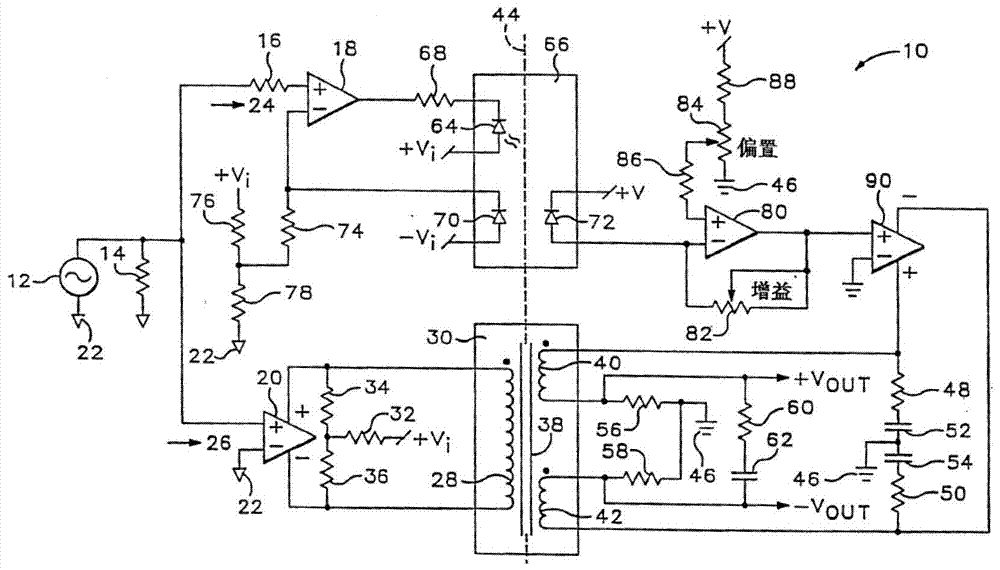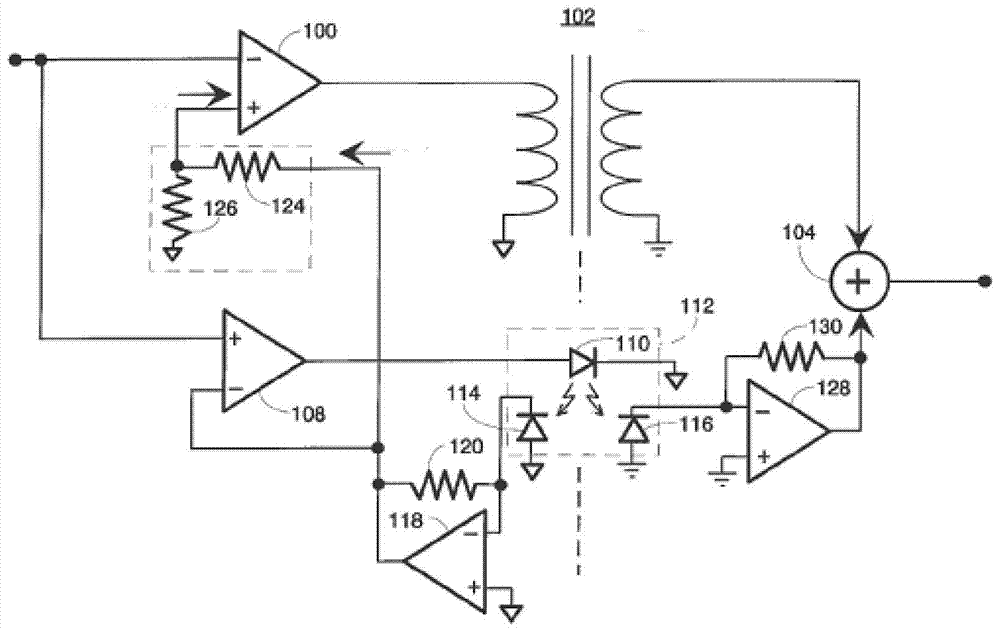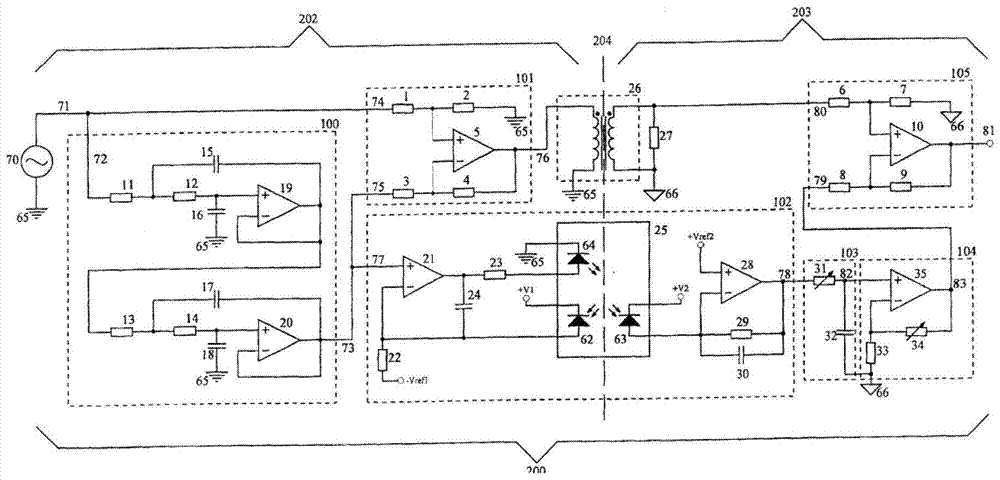A shunt linear isolation circuit and its oscilloscope
A technology of isolating circuits and routing, applied in the direction of voltage/current isolation, instruments, measuring electrical variables, etc., can solve the problems of complex low-frequency path circuits, increase high-frequency, low-pass, etc., and achieve simple circuit form and high DC accuracy Effect
- Summary
- Abstract
- Description
- Claims
- Application Information
AI Technical Summary
Problems solved by technology
Method used
Image
Examples
Embodiment 1
[0103] Figure 6 It is the structural diagram of this embodiment. This embodiment is used to realize linear isolation for single-ended signal input.
[0104] In this embodiment, the low-frequency amplifying circuit amplifier U1 selects a low-bandwidth high-precision amplifier, and the circuit form of the low-frequency amplifying circuit can have the following four forms:
[0105] As shown in Figure 7(A), form 1 follows the circuit, and the circuit bandwidth is determined by the amplifier itself.
[0106] As shown in Figure 7(B), Form 2 is a low-pass follower circuit, and the circuit bandwidth is determined by R1, C1 and the amplifier bandwidth.
[0107] As shown in Figure 7(C), form 3, RC low-pass first, and then the amplifier follows, the circuit bandwidth is determined by R, C and the amplifier bandwidth.
[0108] As shown in Figure 7(D), Form 4 is an active second-order low-pass amplifier. The circuit bandwidth is determined by R1, C1, R2, C2 and the amplifier bandwidth....
Embodiment 2
[0128] Figure 9 It is the structural diagram of this embodiment.
[0129] The difference between the second embodiment and the first embodiment is that both the driving and receiving of the transformer T1 adopt a differential mode. The amplifier of the high-frequency subtraction amplifier circuit is a fully differential amplifier, and the output of the amplifier is a differential signal, which is connected to both ends of the primary side of the transformer T1 to drive the transformer. The signal input and the low-frequency signal are connected to the two input terminals of the differential amplifier circuit to form a subtraction circuit. Resistance value R2=R3=R4=R5=300Ω.
[0130] The snubber circuit is connected as Figure 9 As shown, the transformer load resistor R6 is connected to both ends of the secondary side of the transformer, and connected to the positive and negative input terminals of the differential amplifier circuit.
Embodiment 3
[0132] Figure 10 This is the structure diagram of the branch linear isolation circuit in this embodiment.
[0133] This embodiment provides a shunt linear isolation circuit for differential signal input. The signal input is a differential signal, and the low-frequency amplifier circuit also adopts a fully differential amplifier circuit. Its bandwidth can be selected according to the requirements of the low-frequency path, and an additional low-pass filter circuit can also be added to ensure that the bandwidth of the low-frequency path meets the signal input requirements of the Σ-ΔADC. . Such as ADI's fully differential amplifier AD8476.
[0134] Or use two single-ended amplifiers to amplify the P and N terminals of the differential input signal at low frequencies respectively, and the selection of the amplifiers is the same as in Embodiment 1, such as Figure 11 shown.
[0135] The difference between the high-frequency subtraction amplifier circuit and Embodiment 2 is tha...
PUM
 Login to View More
Login to View More Abstract
Description
Claims
Application Information
 Login to View More
Login to View More - Generate Ideas
- Intellectual Property
- Life Sciences
- Materials
- Tech Scout
- Unparalleled Data Quality
- Higher Quality Content
- 60% Fewer Hallucinations
Browse by: Latest US Patents, China's latest patents, Technical Efficacy Thesaurus, Application Domain, Technology Topic, Popular Technical Reports.
© 2025 PatSnap. All rights reserved.Legal|Privacy policy|Modern Slavery Act Transparency Statement|Sitemap|About US| Contact US: help@patsnap.com



